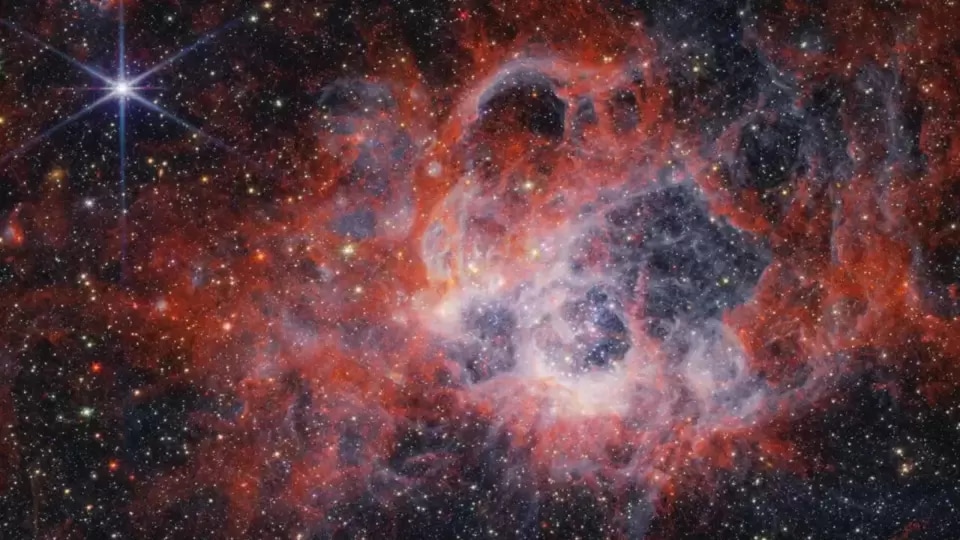NASA's James Webb Space Telescope snaps NGC 604, unlocks some star formation mysteries
NASA's James Webb Space Telescope has captured breathtaking images of NGC 604, a star-forming region in the Triangulum galaxy, unveiling the intricate processes of star birth.


Stars are born in chaotic and fascinating environments, and scientists are eager to understand more about these processes. And at the forefront of this exploration is US space agency NASA's James Webb Space Telescope. Ever since its launch, it is helping astronomers see these celestial events like never before.
Recently, James Webb Space Telescope captured two stunning images of NGC 604, a place in the Triangulum galaxy where stars are forming. It's about 2.73 million light-years away from Earth. These images show us bubbles and long strands of gas where stars are being born.
Inside NGC 604, there are over 200 very hot and massive stars. These stars, called B-types and O-types, are rare in our cosmic neighborhood. There's nowhere quite like NGC 604 in our own Milky Way galaxy. Because NGC 604 is close to us and full of massive stars, it's a great place for scientists to study these stars as they start their lives.
In one image from the James Webb Space Telescope, we see red tendrils and clumps of gas. These are formed by powerful winds from young stars and ultraviolet radiation. They create bubbles and light up the surrounding gas. The orange streaks in the image are made of carbon-based molecules called polycyclic aromatic hydrocarbons (PAHs). They're important for making stars and planets, but it's not sure where they come from.
Another image shows us a different view of NGC 604. It has fewer stars and focuses more on the cooler gas and dust clouds. This helps scientists understand how these regions change over time.
NGC 604 is about 3.5 million years old and stretches across 1,300 light-years. Studying it with the James Webb Space Telescope gives a closer look at how stars are born and evolve in our universe. This remarkable telescope helps unravel the mysteries of the cosmos, offering insights into the intricate processes of star formation and the dynamic environments where these celestial bodies take shape.
One more thing! We are now on WhatsApp Channels! Follow us there so you never miss any updates from the world of technology. To follow the HT Tech channel on WhatsApp, click here to join now!
Catch all the Latest Tech News, Mobile News, Laptop News, Gaming news, Wearables News , How To News, also keep up with us on Whatsapp channel,Twitter, Facebook, Google News, and Instagram. For our latest videos, subscribe to our YouTube channel.
































